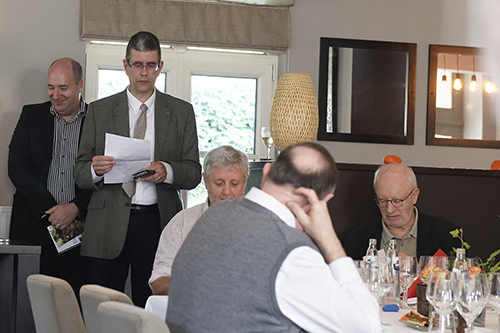 "The Chasselas in Brussels" invites you to revisit by yourself a great variety, glass in hand; to appreciate its subtlety and lightness, so up-to-date; but also its potential of guard and its capacity to reveal the terroirs, without forgetting its gastronomic versatility. "The Chasselas in Brussels" invites you to revisit by yourself a great variety, glass in hand; to appreciate its subtlety and lightness, so up-to-date; but also its potential of guard and its capacity to reveal the terroirs, without forgetting its gastronomic versatility.
The wines presented today are a selection among the gold medals awarded at the last Mondial du Chasselas, which was held near Lausanne, last June, under the auspices of the Chasselas Promotion Association.
These wines can be classified in two broad categories: young wines on the fruit, soft and often very floral; and wines of guard, more full-bodied.
You have read well: wine of guard. We do not always think about it, so it is pleasant in its first months, but Chasselas has an astonishing potential of aging.
Year after year, he gains in structure and texture.
You can enjoy it for yourself by tasting some older vintages.
We also propose to test several gourmet agreements during a workshop.
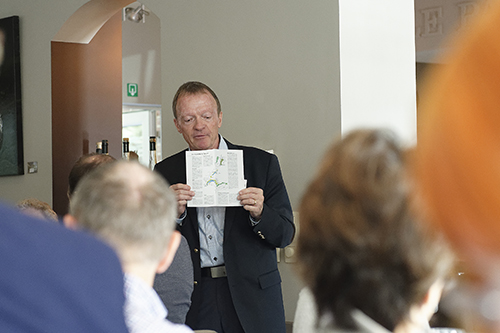
"Chasselas & Cheese", presented by Marc Vanhellemont. Then continue on the same tasty, during the meal concocted by the leader of the Passage, Rocky Renaud, around this variety.
History to show that chasselas is exported well, that it can lend itself to all kinds of cuisines.
Finally, to complement your sensations, the attached booklet will allow you to delve into the history and geography of chasselas - alias Lausanne; because it is a fact, Chasselas, in spite of its Burgundian village name, is indeed Lemanic.
And even Vaudois.
In this brochure, you will find the list of appellations that produce Chasselas In Switzerland, they are mainly divided between the Pays de Vaud (Chablais, La Côte, Lavaux, Banvillars and Vully, not to mention the two Grands Crus Dézaley and Calamin), Valais (where the grape takes the name of Fendant).
In Germany, where it takes the name of gutedel, one finds it mainly in Baden, and more precisely in Markgraferland, between the Rhine and the Black Forest..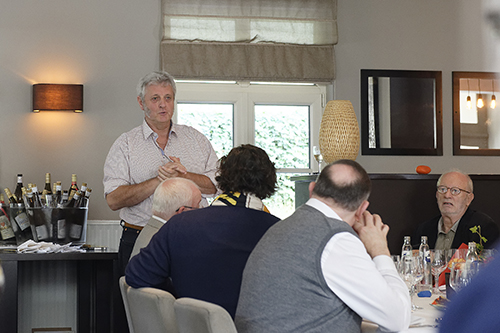
In France, three major regions are involved in Chasselas: Savoy - including the Crepy, Marin and Ripaille denominations, on the shores of Lake Geneva; Alsace (where it is often used in assembly, and therefore poorly publicized); and finally to Pouilly-sur-Loire, where it should not be confused with Pouilly-Fumé, from Sauvignon.
Chasselas is also present in Hungary, Mexico and Chile under different names.
A tasting book with the list of wines offered today was given to you at the entrance.
Now it's up to you to get your idea of chasselas.
We wish you wonderful discoveries.
And as they say in Chasselas country: "A black idea? Chasselas! "
https://www.mondialduchasselas.com
To taste and marry Chasselas
To taste chasselas, it's entered the school of subtlety.
This grape may not shine by an aromatic explosion, but thanks to its subtlety that must be appreciated.
All in nuances and complex and delicate notes, he teaches us humility, to be more attentive to the slightest expression. And expression, he has!

Diversity
Chasselas is neither uniform nor simple nor neutral, quite the contrary!
Vinification, with or without malolactic fermentation introduces a first nuance.
It changes its character, the perception of its freshness or its roundness.
This is the difference between the Swiss type (usually with malo) and the German or Loire type (usually without malo).
Both of them work well with river fish and especially those of Lake Geneva.
The grilled or smoked lavaret or fera, the perch frying, the carpaccio char or sauce char, never refuse a chasselas, our taste buds either.
Chasselas loves the terroir, the soil where it grows, so much so that it makes a photograph and identifies easily.
As an example, let's take two great Vaud wines. As much as the Dézaley Grand Cru from Lavaux seduces with its refinement, its lightness, its purity, so much the Calamin, also of Lavaux, astonishes by its restrained power, the depth of its language, the complexity of its parts.
In short, they both bluff your taste buds.
To accompany them, think of a white meat covered with mushrooms, saucée of cream or more extreme, in oriental preparation raised with curry, ginger or Thai basil
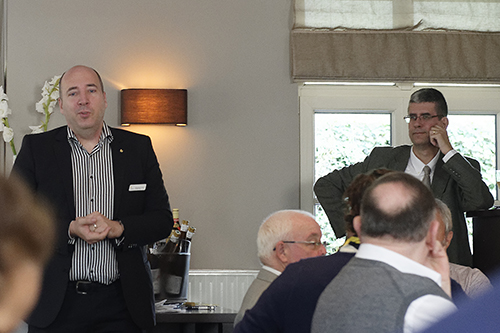
Potential of guard
Not convinced yet? Here is another important argument: the aging ability of chasselas.
From year to year, it asserts itself more and more, reinforcing its structure as its texture which adopts a curve of the most exciting.
Moreover, after a few years, it goes with almost everything.
But he can also appreciate himself, for himself - and for our greatest pleasure.
Here is an example, a vintage that has spent 40 years.
Dézaley-Marsens of the Tower 1975
Domaine Frères Dubois in Cully.
Golden coppery, it offers first nose the delicate scent of an old rose highlighted with cumin before curiously crumple some chervil leaves, then switch to yellow fruit, dried apricot, dried mango and peach syrup.
The mouth does not respond to the nose and plays the solo with a refreshing licorice bitter, amplified by a candied lemon peel to after lengthen almost infinitely on a bed of rosemary powdered with white pepper.
Chasselas and cheeses
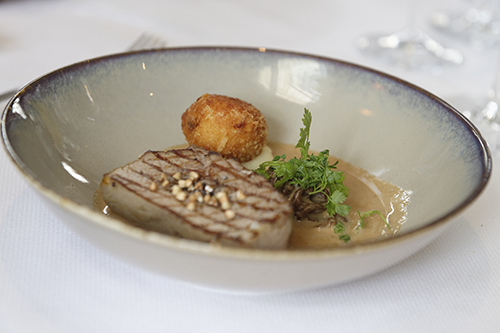 To best match the chasselas with the cheese in the tray, we will pick in the vintages, particular vintages, as the fresh and freshness unfiltered or slightly sweet, or in the vintages a little or a little older, according to the opportunities. To best match the chasselas with the cheese in the tray, we will pick in the vintages, particular vintages, as the fresh and freshness unfiltered or slightly sweet, or in the vintages a little or a little older, according to the opportunities.
And we will not hesitate to leave regional weddings, because Chasselas is a very open grape variety. Here are some concrete examples ...
Agreement n ° 1
Wine: Neuchâtel Non Filtré 2018 Cave of Béroche
This unfiltered (a specialty of Neuchâtel) smells chamomile and licorice wood, linden and white currant, all sprinkled with white pepper.
The palate immediately pleases with its freshness, its very light carbonic relief, its creaminess of texture, then its delicate aromas of sweet pear, crunchy apple, juicy apricot, plum jelly.
The whole is refreshed and relieved by the graceful bitterness of grapefruit zests and citrons, supported by chamomile.
The cheese: Tomme de ewe from Clos de la Ginestarie (Tarn)
A semi-hard dough that, at first, is salty-sweet, with roasted notes of mocha and shortbread biscuit, crushed walnuts and almonds, dried herbs and hay.
The agreement:
Gentle, but with the austerity of the mineral that develops in the mouth, a pile of dry stones on which grow thyme, rosemary, sage, then come aromas of dried apple and pear, pepper,
The wine changes the dough into creamy cheese, the cheese makes the wine more tense.
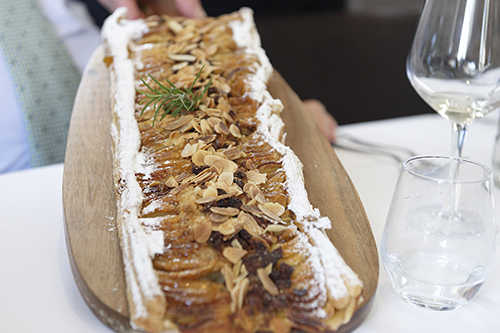
Agreement n ° 2
The wine: Chasslie 2018 Baden Julius Zotz
The bright green white dress exudes iodine and gunflint, before evoking some herbs, dill and caraway that highlight the loquat paste and apple jelly.
The palate oscillates between sweetness and salinity mixed with the slight bitterness of licorice.
The wine offers a nice density that recovers the acidulated apple, a rennet flavored with black pepper and liquorice, but also gooseberry jam tinged with pink
Cheese: Chabichou
A creamy soft goat where the salty note is heard with the tangy to bring us a superb freshness in the mouth.
The agreement:
it develops very peppery notes that come to tickle the mineral and the fruits of the two partners, then the very delicate salt takes over to insert apple, pear and almond in the cream of the cheese.
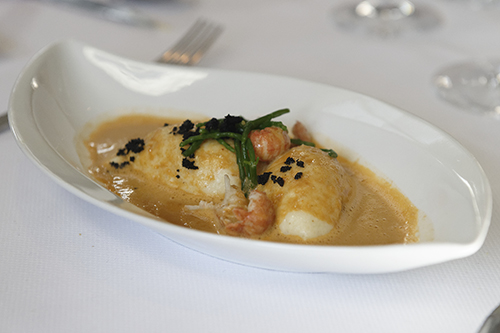
Agreement n ° 3
The wine: Dézaley Grand Cru 2017
Epesses Lavaux Patrick Fonjallaz
The green golden robe shines in the glass and offers spicy scents of coriander, cardamom and fenugreek before breathing the tart tatin, orange cream, elderflower and acacia honey. Exotic fruits
The mouth is surprising by its soft note, the roundness well balanced by a superb freshness.
We find the spices and the fruits, these last confits relieved of a salt nothing and underlined by a line of licorice.
We dive into this greedy wealth that leads us to oriental horizons where everything seems to fill the palate, while keeping as leitmotif freshness.
The cheese: L'Etivaz AOP
Hard cooked pasta whose smoke note intrigues the mouth.
Its fairly high salt content brings a palatability that the taste buds delight in, as well as its slightly animal character with the crunchiness of tyrosine, followed by the sweetness of the jelly of queen-claude, white fig and spiced nut of cinnamon. cumin.
The agreement:
The salinity of the cheese seems to disappear during the wedding to
evidence a multitude of candied fruits.
The latter, Mirabelle plum, quince, cherry, angelica, tumble in tight rows well spiced.
Agreement n ° 4
The wine: Flintstones Fendant 1992
Provins Valais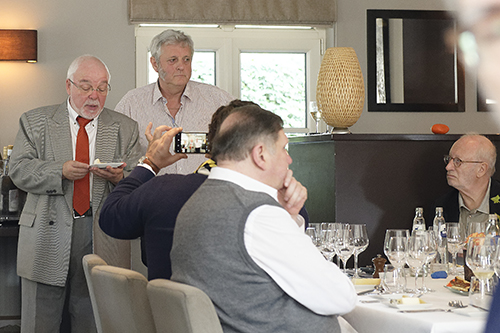
The brilliant green gold teases the eye, as for the nose, it seduces by its scents dry celery, hazelnut, candied mandarin, dead leaf, fir honey, its subtle accent of hydrocarbon ...
The mouth is refreshing with peppered mineral slightly smoked with a flint, then delights with plum juice and linden tea.
The texture offers a slight relief that is reminiscent of tannins.
Spicy length where we find the bitterness of gentian, shade bitter that revives the taste buds at the end of tasting and leads to scents of toasted almonds.
Cheese: Blue Jersey by Willy Schmidt
Exquisitely greasy and delicious, with its hint of salt and pepper, cream of hazelnut and walnut accents of melissa and white chocolate, this is a very tasty cheese.
The agreement:
The wine reduces the fatness of the cheese and gives it a mineral character that rebalances the marriage. Then, he sits it and allows him to evolve towards the dried fruits, from hazel nut to peanut.
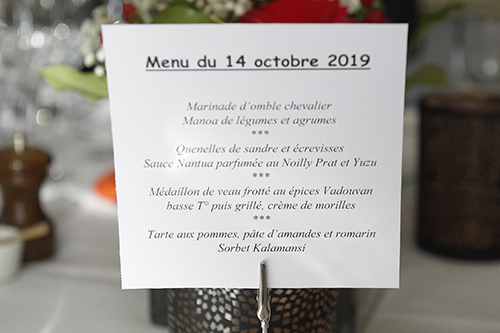 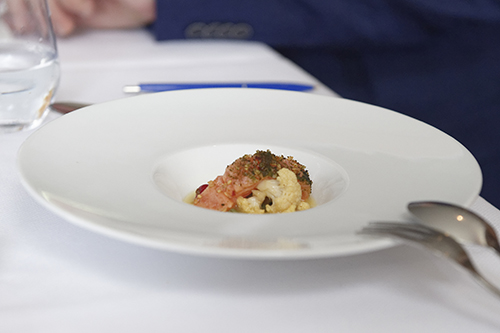 . .
|





 To best match the chasselas with the cheese in the tray, we will pick in the vintages, particular vintages, as the fresh and freshness unfiltered or slightly sweet, or in the vintages a little or a little older, according to the opportunities.
To best match the chasselas with the cheese in the tray, we will pick in the vintages, particular vintages, as the fresh and freshness unfiltered or slightly sweet, or in the vintages a little or a little older, according to the opportunities.



 .
.